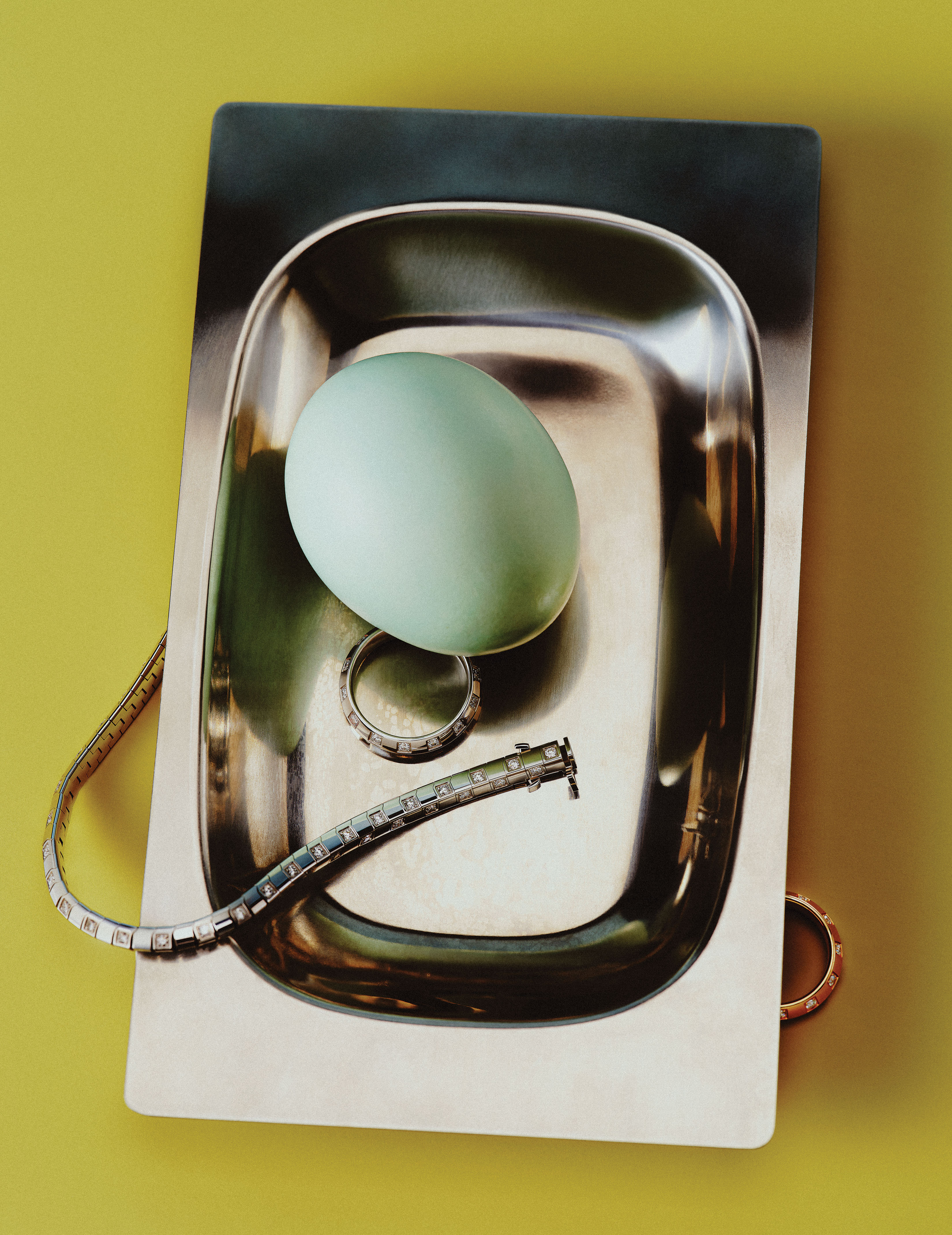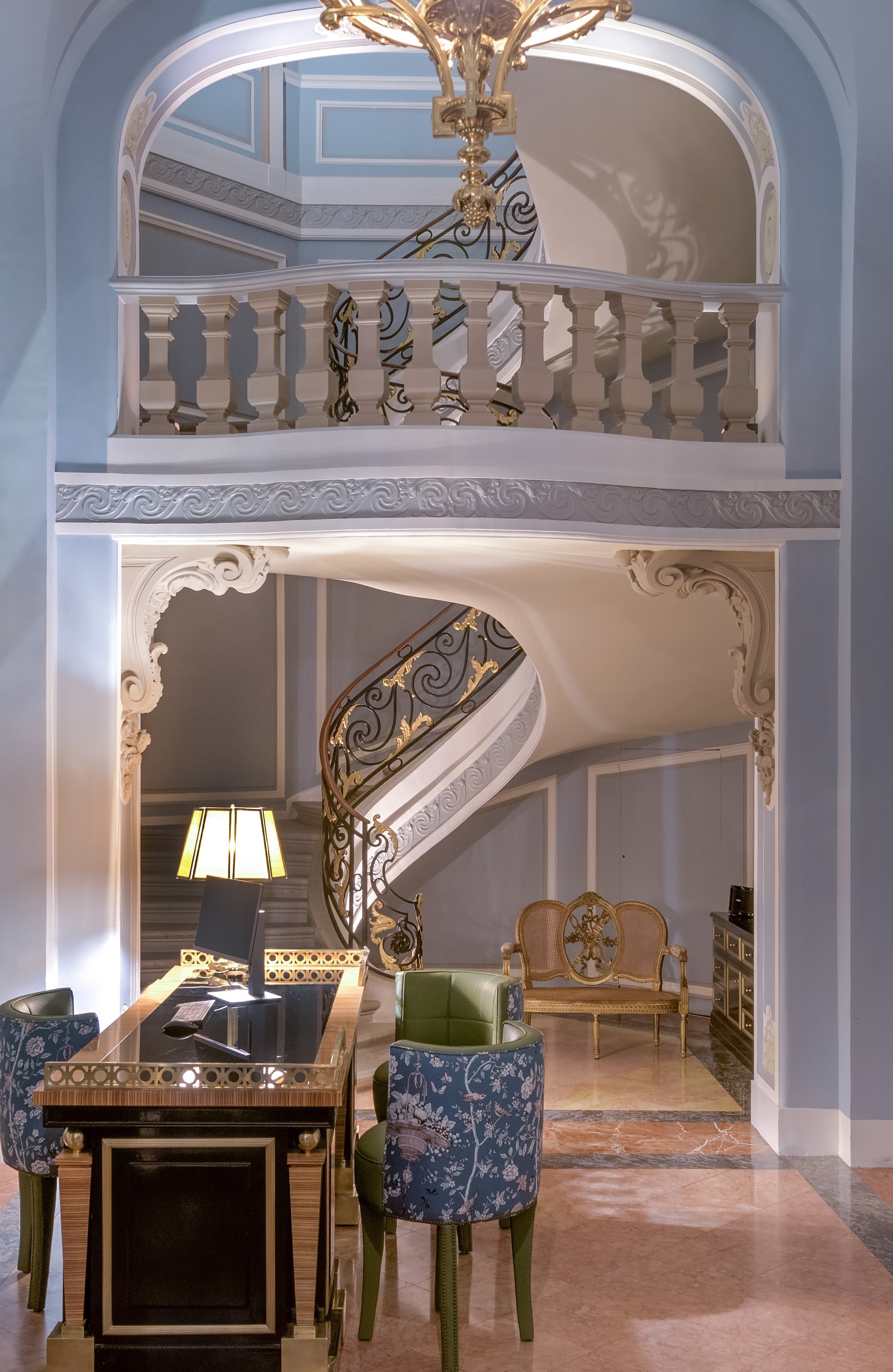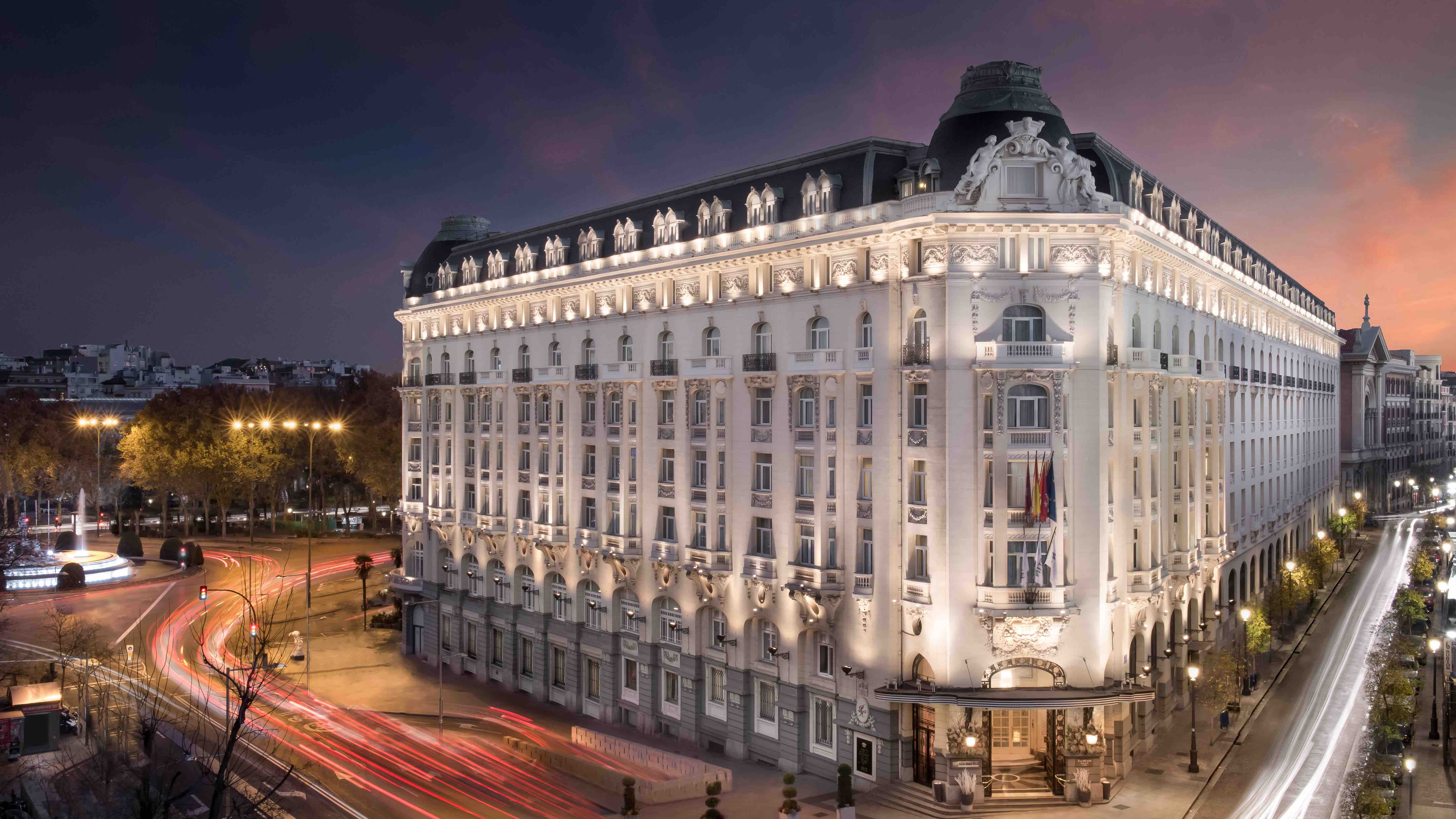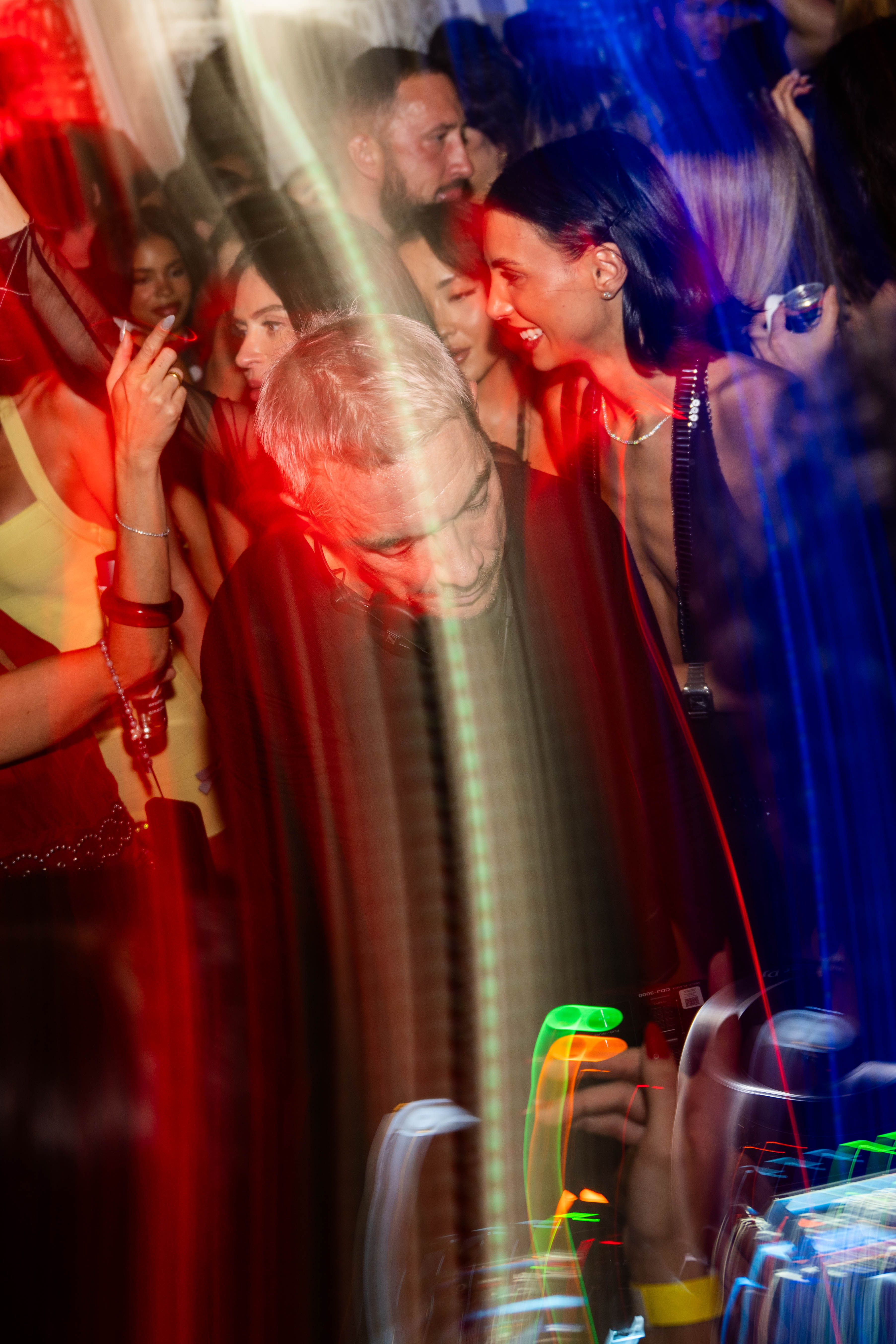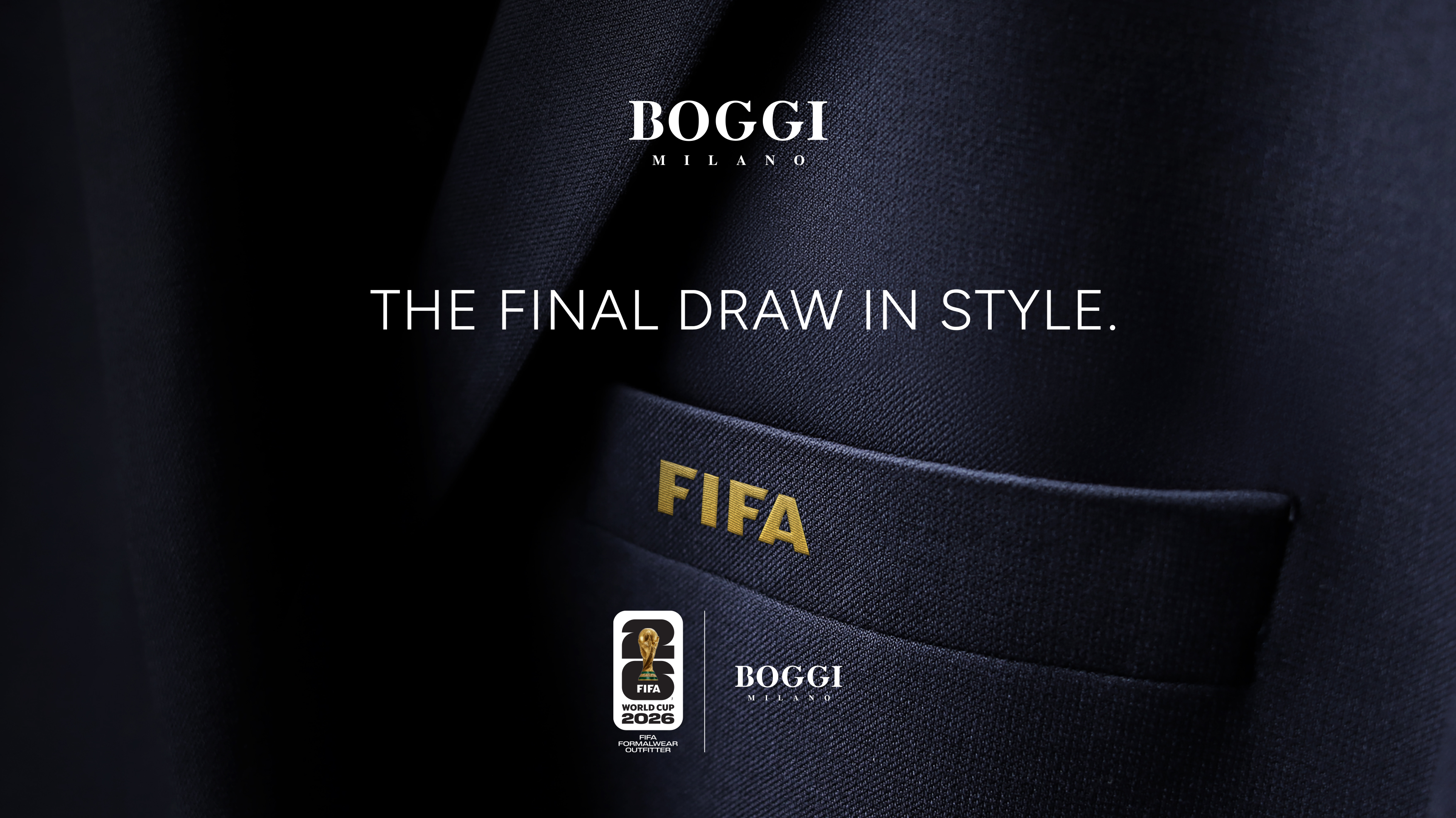

Marisa Adesman. “Midnight Snack” (2021). Oil on canvas. 20” x 14”. Courtesy the artist and Anat Ebgi. Photo by Michael Underwood.
For some, they’re fresh out of bed to greet the day—early birds up for the worm. For others, the arrival of dawn symbolizes closure on a long and drawn out night—likely soaked in sorrow or joy, or a combination therein. The moment can be lonely, and so still. Then, almost in an instant, thousands of birds might be singing, just for you. For artist Marisa Adesman, the hours that precede that moment—the dawn chorus—are when creativity strikes the most. “I am very inspired by the stillness and quietness that can only occur around 3 or 4 AM,” Adesman shares. “I try to encounter the seemingly mundane with a playful spirit and a degree of hopefulness.” This darkness allows her to see light and potential in the often overlooked objects of the waking day. “The fork-ness of the fork,” she says coolly, “as it morphs and transforms right before my very own, sleepy eyes.”
Adesman—newly represented by hip Los Angeles outfit, Anat Ebgi Gallery—has been focusing her art on forks since her time at college. “I have become increasingly interested in the fork as my protagonist.” The weapon that once represented the domestic is now an axiom for rebellion, questioning humanity in its entirety. “The fork’s pliability questions the hierarchies of value that we’ve placed on the ideas of ‘civilized’ and ‘uncivilized’, ‘domestic’ and ‘wild’,” she explains. Humans, she attests, have long thought of themselves as autonomous in the power structures of the world, forgetting their constant reliance on animals, plants, and systems. “The bending forks ask us to rethink whether humans are truly the pinnacle of evolution, or merely players in a much vaster game.”
Paralleled with the nuanced complexities of the dinner table and kitchen, Adesman’s work has a pronged feminist approach, which empowers objects that have long been perceived as oppressive. “Sensual yet horrifying,” she cites, when considering the hard-nosed duality found in her work, “nourishing yet violent, familiar yet surreal, alluring yet deceptive—these dichotomies serve as a metaphor for the paradoxes of human life, and especially the feminine experience.”
When asked about the biggest influence on her art, she reflects on a year-long collaborative film project she did in 2019, _The Ballad of Yesterday, Today, and Tomorrow._ “I believe this project was pivotal for me since it was a synthesis of so many things I had been consistently thinking about, such as fairy tales, food and dining, surrealism, social media, narrative, and cinematography.” The excitement and nostalgia she expresses hangs comfortably on the horizon, still guiding her practice. “Even today,” she continues, “I can definitely still see the influence that this project has had on the way I approach each of my paintings.”
Adesman concludes our conversation with further reminiscing. “I remember my high school guidance counselor—jokingly?—warning me that if I kept up with this ‘art thing,’ I wouldn’t have much of a social life,” she laughs, “Little did she know that choosing a career in the arts would lead me to finding such a wonderfully vibrant and supportive community.” Indeed, the art world is a buzzing ecosystem where birds of a feather often flock together. And anyway, wandering around the house at four in the morning, waiting for that dawn chorus bird song, and contemplating the social implications of a fork? Who needs a social life!?
 
Marisa Adesman. “Midnight Snack” (2021). Oil on canvas. 20” x 14”. Courtesy the artist and Anat Ebgi. Photo by Michael Underwood.
For some, they’re fresh out of bed to greet the day—early birds up for the worm. For others, the arrival of dawn symbolizes closure on a long and drawn out night—likely soaked in sorrow or joy, or a combination therein. The moment can be lonely, and so still. Then, almost in an instant, thousands of birds might be singing, just for you. For artist Marisa Adesman, the hours that precede that moment—the dawn chorus—are when creativity strikes the most. “I am very inspired by the stillness and quietness that can only occur around 3 or 4 AM,” Adesman shares. “I try to encounter the seemingly mundane with a playful spirit and a degree of hopefulness.” This darkness allows her to see light and potential in the often overlooked objects of the waking day. “The fork-ness of the fork,” she says coolly, “as it morphs and transforms right before my very own, sleepy eyes.”
Adesman—newly represented by hip Los Angeles outfit, Anat Ebgi Gallery—has been focusing her art on forks since her time at college. “I have become increasingly interested in the fork as my protagonist.” The weapon that once represented the domestic is now an axiom for rebellion, questioning humanity in its entirety. “The fork’s pliability questions the hierarchies of value that we’ve placed on the ideas of ‘civilized’ and ‘uncivilized’, ‘domestic’ and ‘wild’,” she explains. Humans, she attests, have long thought of themselves as autonomous in the power structures of the world, forgetting their constant reliance on animals, plants, and systems. “The bending forks ask us to rethink whether humans are truly the pinnacle of evolution, or merely players in a much vaster game.”
Paralleled with the nuanced complexities of the dinner table and kitchen, Adesman’s work has a pronged feminist approach, which empowers objects that have long been perceived as oppressive. “Sensual yet horrifying,” she cites, when considering the hard-nosed duality found in her work, “nourishing yet violent, familiar yet surreal, alluring yet deceptive—these dichotomies serve as a metaphor for the paradoxes of human life, and especially the feminine experience.”
When asked about the biggest influence on her art, she reflects on a year-long collaborative film project she did in 2019, _The Ballad of Yesterday, Today, and Tomorrow._ “I believe this project was pivotal for me since it was a synthesis of so many things I had been consistently thinking about, such as fairy tales, food and dining, surrealism, social media, narrative, and cinematography.” The excitement and nostalgia she expresses hangs comfortably on the horizon, still guiding her practice. “Even today,” she continues, “I can definitely still see the influence that this project has had on the way I approach each of my paintings.”
Adesman concludes our conversation with further reminiscing. “I remember my high school guidance counselor—jokingly?—warning me that if I kept up with this ‘art thing,’ I wouldn’t have much of a social life,” she laughs, “Little did she know that choosing a career in the arts would lead me to finding such a wonderfully vibrant and supportive community.” Indeed, the art world is a buzzing ecosystem where birds of a feather often flock together. And anyway, wandering around the house at four in the morning, waiting for that dawn chorus bird song, and contemplating the social implications of a fork? Who needs a social life!?

Marisa Adesman. “Midnight Snack” (2021). Oil on canvas. 20” x 14”. Courtesy the artist and Anat Ebgi. Photo by Michael Underwood.
For some, they’re fresh out of bed to greet the day—early birds up for the worm. For others, the arrival of dawn symbolizes closure on a long and drawn out night—likely soaked in sorrow or joy, or a combination therein. The moment can be lonely, and so still. Then, almost in an instant, thousands of birds might be singing, just for you. For artist Marisa Adesman, the hours that precede that moment—the dawn chorus—are when creativity strikes the most. “I am very inspired by the stillness and quietness that can only occur around 3 or 4 AM,” Adesman shares. “I try to encounter the seemingly mundane with a playful spirit and a degree of hopefulness.” This darkness allows her to see light and potential in the often overlooked objects of the waking day. “The fork-ness of the fork,” she says coolly, “as it morphs and transforms right before my very own, sleepy eyes.”
Adesman—newly represented by hip Los Angeles outfit, Anat Ebgi Gallery—has been focusing her art on forks since her time at college. “I have become increasingly interested in the fork as my protagonist.” The weapon that once represented the domestic is now an axiom for rebellion, questioning humanity in its entirety. “The fork’s pliability questions the hierarchies of value that we’ve placed on the ideas of ‘civilized’ and ‘uncivilized’, ‘domestic’ and ‘wild’,” she explains. Humans, she attests, have long thought of themselves as autonomous in the power structures of the world, forgetting their constant reliance on animals, plants, and systems. “The bending forks ask us to rethink whether humans are truly the pinnacle of evolution, or merely players in a much vaster game.”
Paralleled with the nuanced complexities of the dinner table and kitchen, Adesman’s work has a pronged feminist approach, which empowers objects that have long been perceived as oppressive. “Sensual yet horrifying,” she cites, when considering the hard-nosed duality found in her work, “nourishing yet violent, familiar yet surreal, alluring yet deceptive—these dichotomies serve as a metaphor for the paradoxes of human life, and especially the feminine experience.”
When asked about the biggest influence on her art, she reflects on a year-long collaborative film project she did in 2019, _The Ballad of Yesterday, Today, and Tomorrow._ “I believe this project was pivotal for me since it was a synthesis of so many things I had been consistently thinking about, such as fairy tales, food and dining, surrealism, social media, narrative, and cinematography.” The excitement and nostalgia she expresses hangs comfortably on the horizon, still guiding her practice. “Even today,” she continues, “I can definitely still see the influence that this project has had on the way I approach each of my paintings.”
Adesman concludes our conversation with further reminiscing. “I remember my high school guidance counselor—jokingly?—warning me that if I kept up with this ‘art thing,’ I wouldn’t have much of a social life,” she laughs, “Little did she know that choosing a career in the arts would lead me to finding such a wonderfully vibrant and supportive community.” Indeed, the art world is a buzzing ecosystem where birds of a feather often flock together. And anyway, wandering around the house at four in the morning, waiting for that dawn chorus bird song, and contemplating the social implications of a fork? Who needs a social life!?


